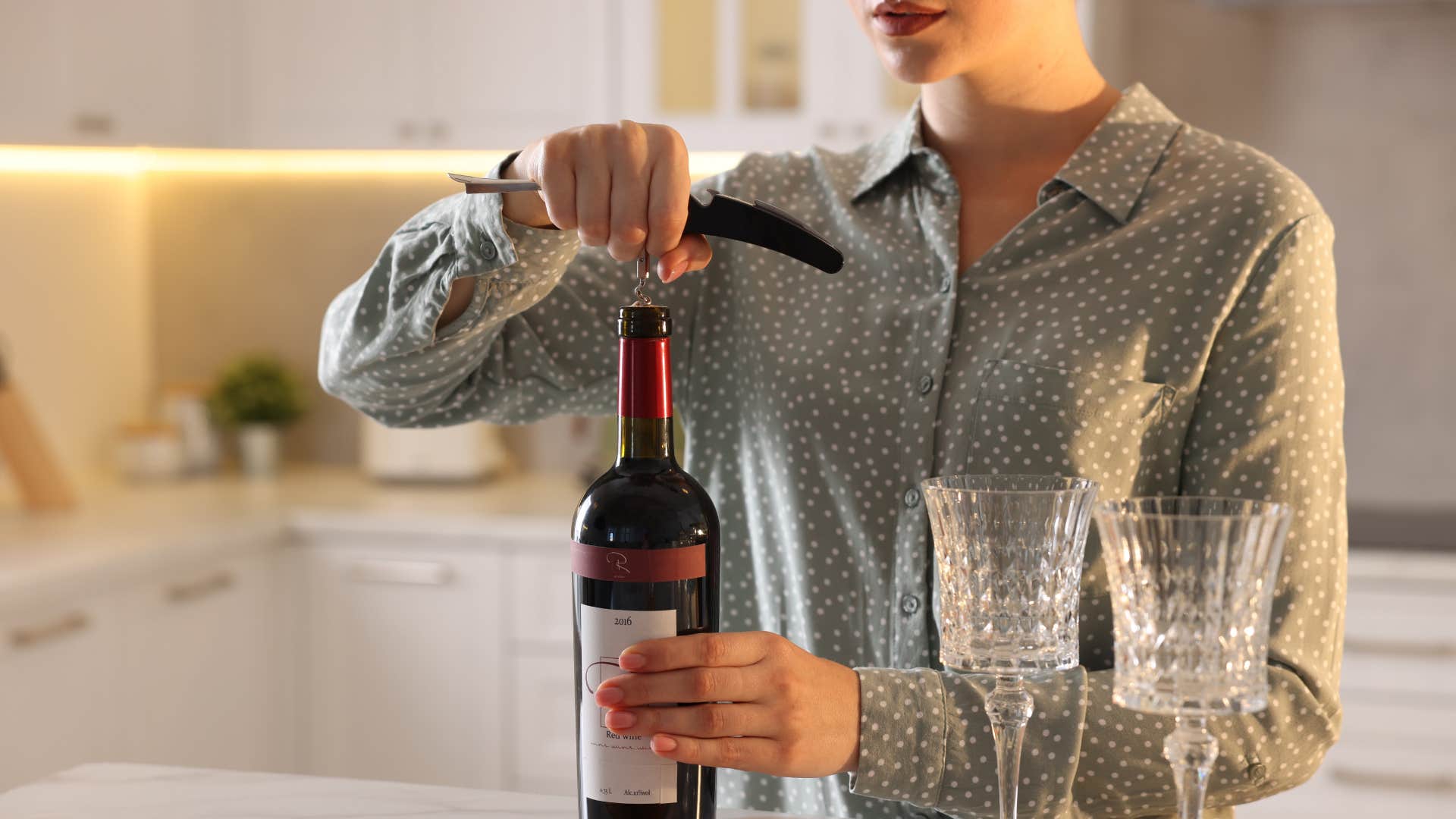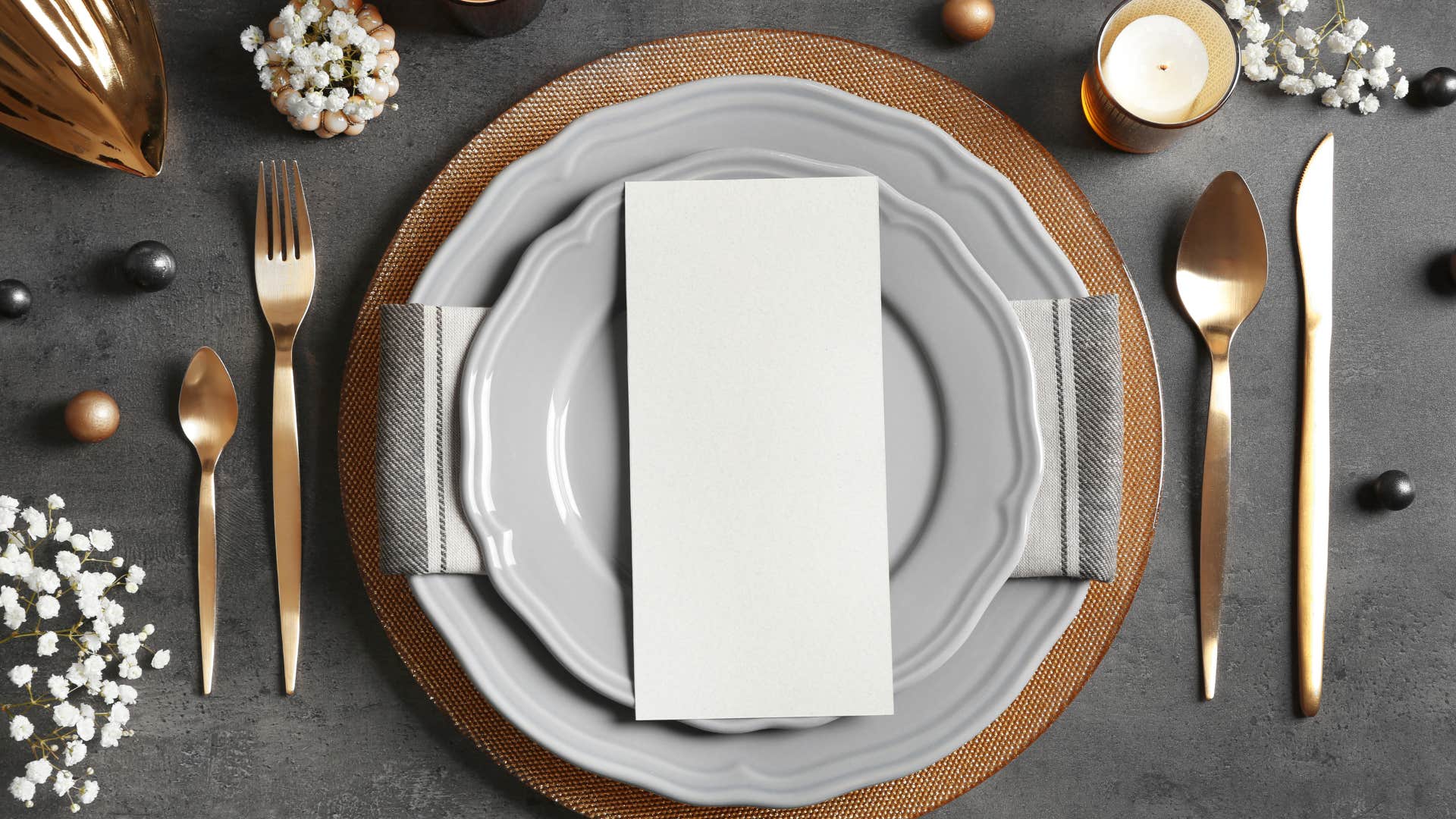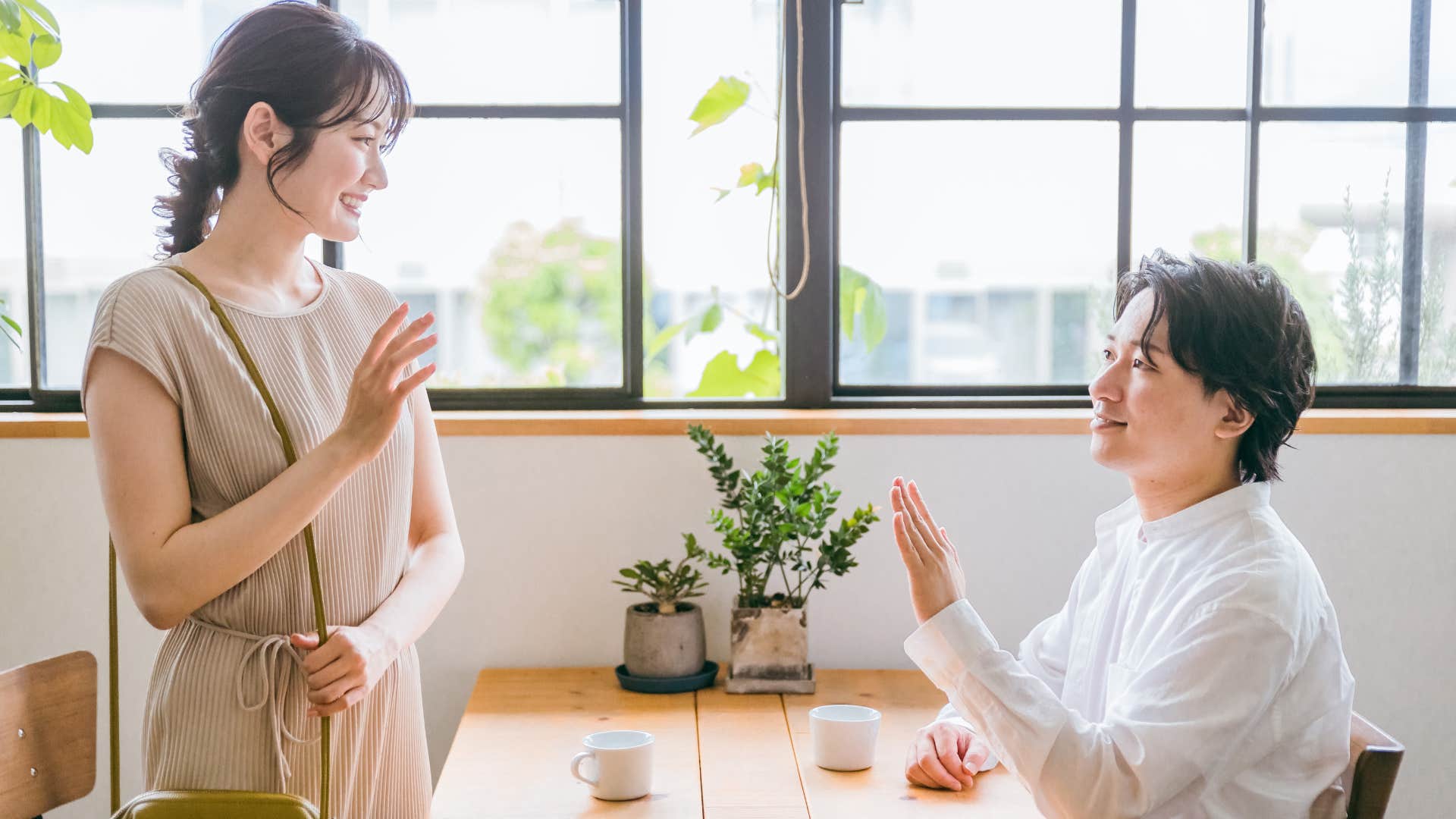11 Secret Etiquette Rules That Signal Someone Who Knows How To Play The High Society Game
Fitting in with high society is all about following rules.
 Jacob Lund | Shutterstock
Jacob Lund | Shutterstock There are several unspoken rules that separate individuals in high society from those who are just average people without any social status. When in formal settings, it can become increasingly noticeable that some people understand those rules, while others just don't. But for people skirting the line, there are certain secret etiquette rules that signal someone who knows how to play the high society game.
Whether that be in a fine dining atmosphere or through the process of introducing themselves to new people, these cues and codes reveal the proper way to go about "fitting in." Because mastering the high society game isn't about who you know, but about how you act.
Here are 11 secret etiquette rules that signal someone who knows how to play the high society game
1. Refilling a glass of wine
 New Africa | Shutterstock
New Africa | Shutterstock
When you're sitting at a classy dinner and you see someone wait for either the host or sommelier to refill their glass of wine, it's a sign they're aware of how high society acts in this situation. Because being a part of it means you understand the rules of refinement.
Those who socialize within elite circles know the social norms that build their identity. They understand the etiquette of being served, and know that in formal settings it's considered polite to allow the host or server to manage things, even as simple as pouring the wine.
2. Specific placement of silverware
 Africa Studio | Shutterstock
Africa Studio | Shutterstock
If, while dining, you notice a person who has an understanding of their silverware, it's one of the secret etiquette rules that signal someone who knows how to play the high society game. Knowing not only where to place silverware, but also what ways to place it to signal when you've finished your meal or are still eating, shows signs of wealth, education, and refinement.
Being that most people do not use an intricate method for placing silverware, this unspoken code for the elite keeps them socially separate from normal people and defines their social status. Someone being able to display these specific manners shows they belong in an environment predominantly made up of high society individuals.
3. Eating bread and butter
 Mix and Match Studio | Shutterstock
Mix and Match Studio | Shutterstock
When you notice someone at the table who is breaking off small pieces of bread and carefully buttering each individual piece, this is a good sign they fit in with high society. This is mainly the proper etiquette for eating bread with butter due to it being less messy.
According to modern etiquette coach Maggie Oldham, "The only correct way to butter and eat your bread is to: Using a knife, put a bit of butter on the side of your bread plate first; Then, tear off one bite-sized piece of bread at a time and butter that piece only, right before putting it into your mouth. Many people make the mistake of buttering the whole slice of bread and then biting into the slice. This sets the stage for butter ending up on your fingers and around your mouth."
4. Introducing others
 Imagesmith | Shutterstock
Imagesmith | Shutterstock
If someone is aware of the proper way of introducing people of different statuses, genders, and ages, it's clear they fit in with high society. When introducing people of different social statuses, you never present someone of a higher status to someone of a lower status; rather, it's the other way around.
You should also only ever introduce someone younger to someone older, a man to a woman, and a junior to a senior. These proper introduction practices are meant to keep the reputation of those with a higher status protected and act as a way to reaffirm social hierarchies.
5. Greeting someone new
 Antonio Guillem | Shutterstock
Antonio Guillem | Shutterstock
When greeting someone new, there are secret etiquette rules that signal someone who knows how to play the high society game. And when embarking on this kind of greeting, you want to avoid sounding as though you are familiar with the new person.
It's best to greet them in a neutral yet still respectful manner. It's also traditional in elite circles to await a greeting that is initiated by a mutual acquaintance and the person being introduced to you. These practices reinforce societal hierarchy and boundaries.
6. Exiting the table
 buritora | Shutterstock
buritora | Shutterstock
When someone exits the table a certain way, they're well aware of how high society acts. When exiting, it's important to make sure that everyone else has finished their meals as well, and then you may politely excuse yourself while placing your napkin on the chair.
Showing a priority of decorum as well as a familiarity with social codes signifies that a person is well-mannered and follows upper-class practices. The difference in manners and table etiquette between those of the upper-class and the lower-class was a distinguishing feature between the two social statuses.
7. Wearing perfume
 Olena Yakobchuk | Shutterstock
Olena Yakobchuk | Shutterstock
While high society etiquette prioritizes refinement and moving in an elegant fashion, a person's fragrance is important as well. But wearing too strong of a perfume or too many scents comes across as vulgar and makes a person appear to make a loud impression.
According to manners and etiquette expert Lisa Richey, there are guidelines to follow when wearing perfume, including being mindful of others and applying sparingly. Someone of high social status would rather wear no perfume at all than be seen as rude in this way.
8. Talking about cost of things
 Chay_Tee | Shutterstock
Chay_Tee | Shutterstock
By not discussing finances or prices, this is yet another of the secret etiquette rules that signal someone who knows how to play the high society game. Because an old money perspective does not place value on conversation about money.
These individuals possess a quiet confidence and are not as flashy with their wealthiness. This follows the unspoken rule of discretion that keeps bragging out of formal settings.
9. Passing salt and pepper
 PV productions | Shutterstock
PV productions | Shutterstock
When at a formal dinner, passing both the salt and pepper is considered proper table manners, keeping the shakers together at all times. Not only does this practice ensure that someone will have both salt and pepper at their disposal without having to ask a second time, but it also is a practice that dates back to the 17th century.
According to food and travel writer Tobias Handke, "King Louis XIV was known to enjoy his food barely seasoned and, at the suggestion of his personal chef, the monarch began making sure salt and pepper were always available on the table when dining. This soon caught on, and everyone began pairing salt with pepper. Over the years, this became part of dining etiquette, and whenever someone asked for salt or pepper, both would be passed at the same time."
10. Sitting in formal settings
 sirtravelalot | Shutterstock
sirtravelalot | Shutterstock
Being mindful of your legs in a formal dinner setting is part of high society rules and etiquette. Crossing at the knee may feel like the normal thing to do, but it's usually considered too casual for formal settings.
Not only is this considered too casual, but crossing at the knee while sitting can also be seen as immodest and come across as unpolished. Keeping both of your knees together and crossing at the ankles looks more elegant and tends to be the more poised and graceful option.
11. Toasting
 KOTOIMAGES | Shutterstock
KOTOIMAGES | Shutterstock
Keeping a toast short and sweet, without making yourself the center of attention, is a common etiquette rule in high society. This is a demonstration of humility while also showing polished social skills, and is usually the way most of these individuals choose to carry themselves. They are usually not concerned with boring an audience or commanding attention.
"Keep it short and to the point. You want the spotlight to stay on the toastee, not you. Tie what you say to the event that is being celebrated. Write out what you will say ahead of time and practice. Don't let nerves bother you — speak clearly and with confidence," experts from Emily Post Etiquette explained.
Kamryn Idol is a writer with a bachelor's degree in media and journalism who covers lifestyle, relationship, family, and wellness topics.

